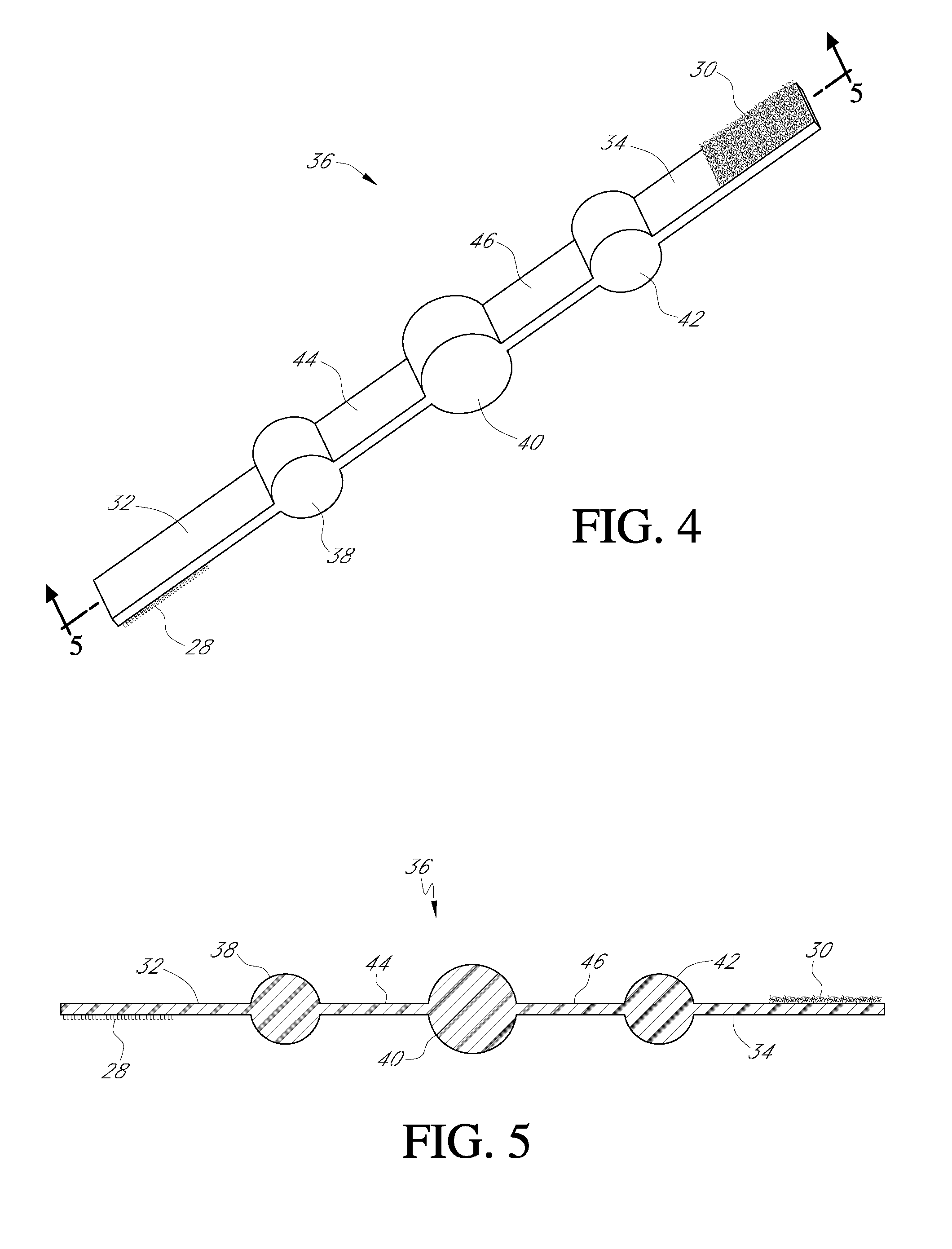Male condom with tension band
a tension band and condom technology, applied in the field of contraceptive devices, can solve the problems of reducing the acceptance and use of condoms in the population, limiting the design of the conventional male, and the tightness of the fit, so as to enhance and prolong the erection, maintain the erection, and minimize the likelihood of leakage
- Summary
- Abstract
- Description
- Claims
- Application Information
AI Technical Summary
Benefits of technology
Problems solved by technology
Method used
Image
Examples
Embodiment Construction
[0038]A disposable male condom 10 according to the present invention is fitted with a tension band 12 that prolongs penile erection during intercourse, without interfering with application and removal of the condom, while accommodating the effective use of the condom for its primary purpose as a prophylactic contraceptive and disease barrier.
[0039]In FIG. 1 there is shown the male condom 10 of the present invention just removed from packaging and before application about an erect penis 14. The male condom 10 has two principal components: a condom base ring 16, a tubular sheath 18 and a closure tip 20 formed on its distal end portion 22 that provides a reservoir for collecting ejaculate.
[0040]A proximal base end portion 24 of the male condom sheath 18 borders the condom base ring 16 and forms an opening 26 for receiving an erect penis 14. The tension band 12 is fitted about the proximal end base portion 24 of the male condom 10, closely adjacent the base ring 16. The tension closure ...
PUM
 Login to View More
Login to View More Abstract
Description
Claims
Application Information
 Login to View More
Login to View More - R&D
- Intellectual Property
- Life Sciences
- Materials
- Tech Scout
- Unparalleled Data Quality
- Higher Quality Content
- 60% Fewer Hallucinations
Browse by: Latest US Patents, China's latest patents, Technical Efficacy Thesaurus, Application Domain, Technology Topic, Popular Technical Reports.
© 2025 PatSnap. All rights reserved.Legal|Privacy policy|Modern Slavery Act Transparency Statement|Sitemap|About US| Contact US: help@patsnap.com



